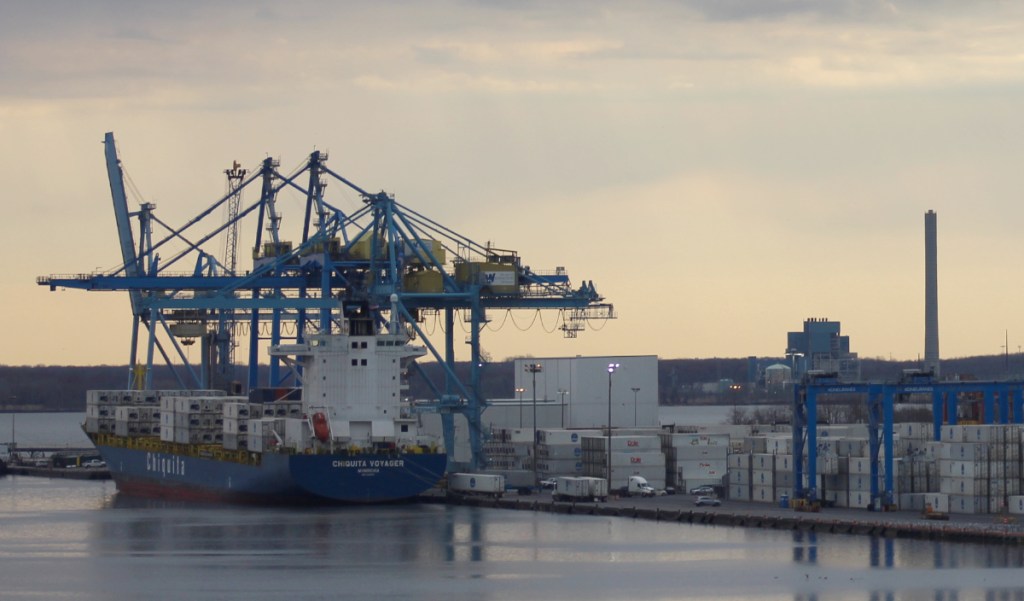Why Should Delaware Care?
A strike of port workers across the East Coast was short-lived last week, but union demands remain unmet and they could have lasting effects on how Delaware builds its next marine terminal.
With the end of the longshoremen strike last week, all eyes at the Port of Wilmington are on a January deadline when the port workers’ union will need to agree to a new contract with an alliance of shipping companies and port operators – or risk another strike.
On Saturday, International Longshoremen’s Association president Harold Daggett noted in a letter to members that the union already secured a six-year, 61% wage increase for port workers, amounting to a $24 per hour pay bump for the highest paid longshoremen.
Now, union demands turn to guarantees that shippers will continue to use union labor, that they maintain health care and other benefits, and that they will establish contractual “protections against the introduction of remote controlled, fully automated machinery that threatens our work,” Daggett said in the letter.
The use of autonomous or semi-autonomous technology on ports has become increasingly common in Asia and Europe, but less so in America – in part because of the opposition by unionized labor.
The expired port workers’ contract included a provision requiring the ILA to approve any use of automation at its ports, but the union claims the use of an automated gate system at a port in Alabama violated that contract.
The Edgemoor port aims to service upward of 1.2 million containers brought in from ships, or roughly three times as many as the existing Port of Wilmington can handle. If successful, it would become one of the 15 largest ports in America by number of containers handled.
But automation has increasingly aided the development of super-sized container ports, including at the nation’s busiest port, the Port of Los Angles, and its third busiest, the Port of Long Beach.
Those ports, like all on the West Coast, work with a different union, International Longshore and Warehouse Union (ILWU).
The Edgemoor container port will finally make progress after a public-private partnership was reached, but the source of the state’s money has lacked transparency. | PHOTO COURTESY OF GULFTAINER
How would it affect Delaware?
For Delaware, Daggett’s demands for ports not to automate could have a lasting impact on how the state develops what it has promised would be a new, state-of-the-art container terminal at Edgemoor – the site of a former DuPont chemical plant along the Delaware River.
In May, Gov. John Carney announced that he would pull $195 million out of a little-known pot of public money to fund about one third of the construction cost for the Edgemoor terminal.
With the announcement, state officials pledged that the new terminal would be a “green” facility that largely operates on electric, rather than internal combustion, power. They notably did not make similar pledges about automation.
Debates over how or whether to automate or use robots for the Port of Wilmington’s operations go back to at least 2018 when Delaware struck a deal with Emirati-based Gulftainer to privatize the facility.
At the time, Gulftainer CEO Peter Richards insisted that the Port of Wilmington would need to automate in order to outperform its competitors along the Delaware River, according to a report then from the Delaware Business Times.
In response, Williams Ashe Jr. – a local union leader and a key deputy to Daggett – said Wilmington would not become an automated port. Instead, “everything will be monitored” by a worker, he said at the time.
A spokesman for the Port of Wilmington newest operator, Enstructure, did not return a call Monday seeking comment about the prospect of automation at Edgemoor.
Insights into how the private operator of Delaware’s taxpayer-owned port would seek to develop its future port are tough to come by. The concession agreement signed by Enstructure – obtained by Spotlight Delaware via a Freedom of Information Act request – only requires the company to hire all existing ILA employees at the time they took over the Port of Wilmington from Gulftainer.
A two-page section regarding the development of the future Port of Edgemoor is almost entirely redacted.
The post Prospect of Edgemoor automation looms as port strike ends appeared first on Spotlight Delaware.

